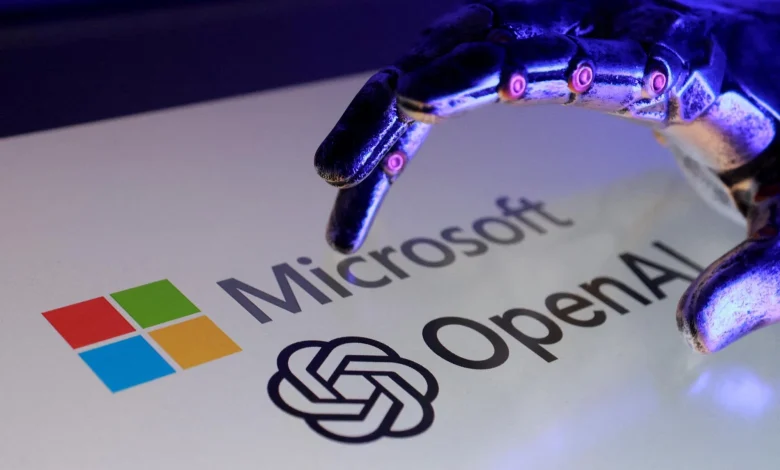College of Arts and Humanities event sparks AI discussion

The College of Arts and Humanities, faculty and students were invited to attend the AI and Us: Conversations Across Disciplines event on Oct. 29. The event was held in the East Banquet Room of the Dining Hall, and lunch and gift bags were provided for the attendees.
Communications graduate student and Associated Students, Inc. (ASI) senator for the College of Arts and Humanities, Sarah Sevy, organized the event to help bridge the communication gap between faculty and students on how to use artificial intelligence (AI) applications in their studies and creative work.
“Artificial intelligence is great for technical stuff, but when it replaces writing and art, where do we go from there?” Sevy said. “What are we going to be doing?”
Sevy said she has been playing with AI ever since it came out and has seen its limitations. However, it can help people with struggles such as attention deficit hyperactivity disorder (ADHD), or save time if you have three kids and a job.
People with ADHD struggle with working memory, and AI can help by acting like a digital memory, according to understood.org. AI can capture ideas in real time, and if a student’s ideas are unorganized and messy, it can help clean them up.
“I have a 90-page prospectus, and I needed to make some major revisions,” Sevy said. “AI will make them in a minute, as opposed to having to reread and take things out.”
Sevy said the illusion of AI replacing human work is the problem. AI can’t think for itself, and students need to learn how to use it responsibly and with integrity.
Sevy said each professor is allowed to have their own AI policy. If a professor states in their syllabus that they don’t want students to use AI, it can be flagged as cheating, with the same ramifications as cheating with anything else. If they’re following Fresno State’s Policy and Procedures on Cheating and Plagiarism, there is a series of steps, including meetings and remediation. A student can be dropped from the class and expelled.
“The least-case scenario is that you can get zeros on your exams and assignments,” Sevy said. “The goal is to get AI use added to the cheating policy explicitly.”
She said that right now, students are being told that if they use AI, they will automatically get a zero on their assignment. This bypasses the policy but doesn’t allow students due process. However, she added that there is really no way to tell for sure whether a student has used AI, so there is a murky area that needs to be defined.
Sevy walked up to the podium and addressed the crowd seated at circular tables that marked the different departments.
“If you want to talk to other faculty, please do, because everybody has the right to have this conversation,” Sevy said.
Thomas Andrade, a studio art graduate student, said he first started using AI in art class. He said they first used image generation, printed the images, transferred them onto a canvas and then painted over the pictures and next to them.
He pointed to an image of a cat with wings that had been painted by Young Maeng, assistant professor of art design and art history.
“This is a really good example because obviously she is the professor,” Andrade said.
Maeng said she first created the art as a personal project and later realized it would be a great project for her students. She lets her students use generative AI and allows them to paint over the image on the canvas by hand.
“It symbolizes how humans and AI work together,” Maeng said.
She said it was a great time for artists to use AI-generated images and incorporate them into unique and creative art. It’s becoming a new genre of art.
Maeng opened up her computer and showed how one of her art pieces can be generated to move on the screen as if it were alive.
At the English department round table, Ginny Crisco, co-director of the first-year writing program and interim director of the writing center, said they have a policy on AI use for first-year writing. She said AI is great for generating images that students can incorporate in their writing.
“Images are a way to help people understand difficult concepts or enhance meaning,” Crisco said.
She said she felt that this was a good use of AI in writing. The students can incorporate the images into their paper, but they’re still using critical thinking in the writing.
John Beynon, an English professor at Fresno State, shared his concerns about how AI is affecting the environment.
“There is a part of me that feels like I have to ethically decide if I’m willing to contribute to water scarcity,” Beynon said. “I think it is a conversation that we’re not having right now.”
Kat Kargiar, an agricultural sciences and technology librarian, said she was really interested in the ethical aspects of AI and the biases that arise within it.
“How can we use AI tools, and what can we use them for?” Kargiar said. “Using AI to write an essay is plagiarism.”
Kargiar said AI tools can be used for brainstorming, but students need to recognize that the professor decides what they can use them for and to what extent.
Sevy said the primary goal of the event was to get students and faculty talking to each other to learn about the different applications of AI in academia and their respective fields of study.
“The CSU made this deal with OpenAI and sent out this embrace without asking anyone, which I guess is their right,” Sevy said. “It came at a time when there wasn’t enough information to be had and training on the matter.”





